Dental Crown on a Tooth: Advantages, Procedure, and Care
A crown is a common dental restoration used to protect, strengthen, and improve the appearance of a damaged or weakened tooth. This article will explore the benefits, procedures, and essential care tips for maintaining a crown, ensuring long-lasting oral health, and achieving a confident smile.
What is a Dental Crown on a Tooth?
A dental crown is a tooth-shaped cap designed to fit snugly over the entire tooth, much like a well-fitted hat. Dentists use crowns to restore weak, broken, or decayed teeth. To do this, a small amount of enamel must be removed before the crown is securely placed in the correct position.
A dental crown on a tooth can be made from various materials, including metal and porcelain. The choice of material depends on the specific case and the patient’s needs to ensure the most suitable option.
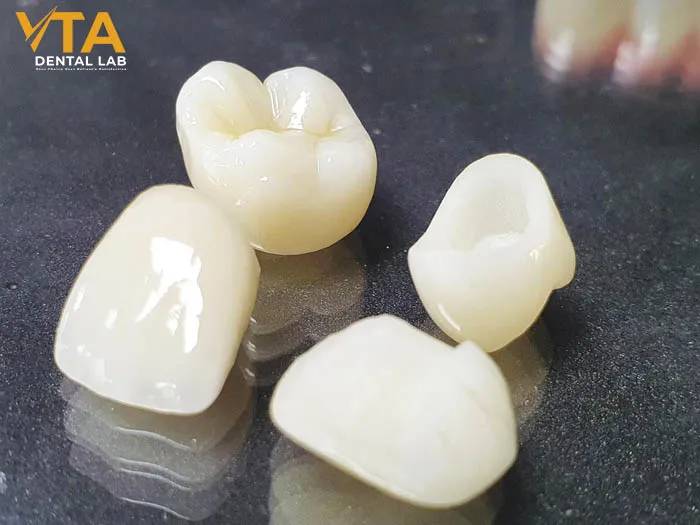
Types of Dental Crowns on a Tooth
Full Cast Metal Crowns
Dental lab technicians create crowns using various metals, including gold, palladium, nickel, and chromium. Metal crowns are highly durable, resistant to chipping or breaking, and cause minimal wear to opposing teeth. Additionally, they require only a small amount of enamel removal and can withstand strong biting and chewing forces.
However, their metallic color is a significant drawback, making them a more suitable choice for less visible areas, such as molars.
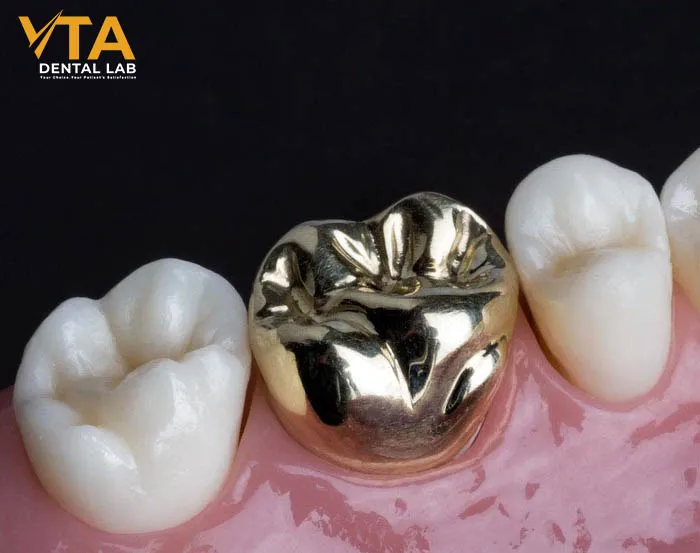
Porcelain-Fused-to-Metal (PFM)
PFM crowns feature a metal base covered by a porcelain layer, offering both durability and a natural appearance. The outer porcelain layer is designed to blend seamlessly with the patient’s natural teeth, making them a popular choice for those who want both strength and aesthetics.
Despite their advantages, PFM crowns come with some drawbacks. Over time, the outer porcelain layer may chip or wear away, exposing the underlying metal and affecting aesthetics. Additionally, these crowns can cause gradual wear on opposing teeth.
The lifespan of PFM crowns is nearly comparable to that of metal crowns, and they are suitable for both front and back teeth.
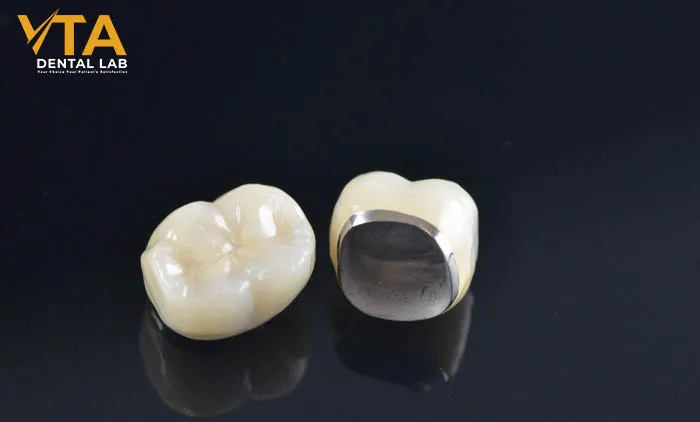
Pressed ceramic crown on a tooth
A pressed ceramic crown is a type of dental crown with a solid ceramic core instead of a metal one, similar to a porcelain-fused-to-metal (PFM) crown. The manufacturing process begins by heating ceramic to an extremely high temperature in a furnace, then pressing it into a mold to form a strong inner core. After that, multiple layers of porcelain are applied to the surface to mimic the natural translucency of tooth enamel. Thanks to this structure, pressed ceramic crowns offer both high durability and excellent aesthetics, making them suitable for both front and back teeth. However, like PFM crowns, the outer porcelain layers of pressed ceramic crowns can chip over time.
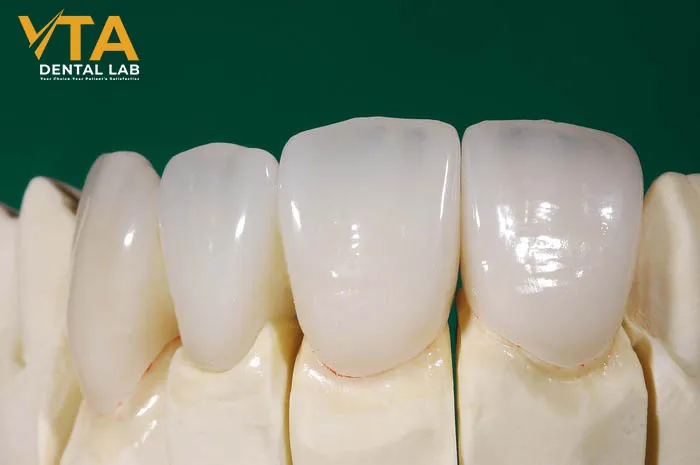
All-Ceramic or Porcelain Crowns
All ceramic or porcelain crowns are designed to blend seamlessly with natural tooth enamel, offering a more aesthetic appearance than other types of dental crowns. They are considered the best option for patients with metal allergies, as they are completely metal-free.
Dental lab technicians use various materials to create porcelain crowns, with zirconium dioxide being one of the most popular choices. Zirconia crowns are known for their high durability and ability to withstand greater forces compared to other porcelain crowns. Additionally, zirconia crowns are gentler on opposing teeth, significantly reducing enamel wear over time.
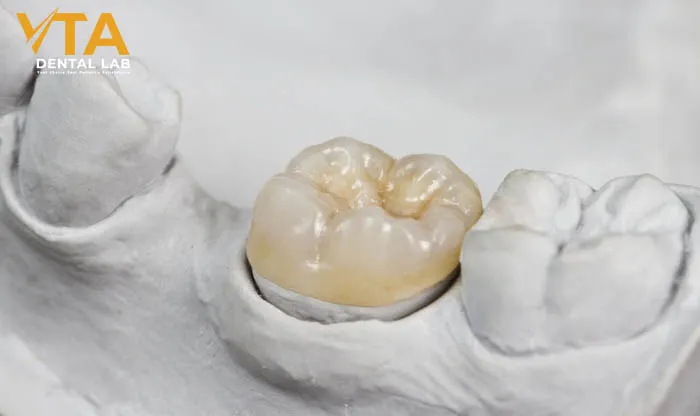
Resin crown on a tooth
A resin crown is a type of dental crown made from composite resin, a tooth-colored material commonly used for fillings and restorations. It is typically used for temporary crowns or as a more affordable alternative to metal or ceramic crowns. They have an average lifespan of three to five years.
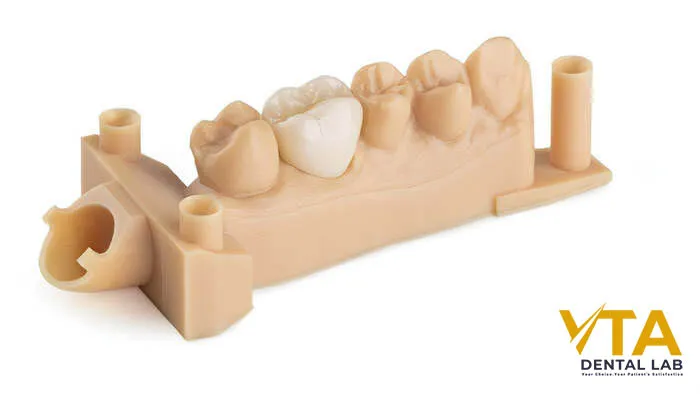
Benefits of a Dental Crown on a Tooth
A dental crown offers numerous advantages, making it a popular choice in restorative and cosmetic dentistry. First, it helps protect and strengthen damaged or weakened teeth, preventing further deterioration. Dental crowns are especially useful for restoring teeth after a root canal treatment, ensuring both durability and functionality. Additionally, they enhance aesthetics by covering discolored or misshapen teeth, providing a natural and uniform appearance.
With modern materials like porcelain and zirconia, a dental crown on a tooth can closely resemble natural teeth, blending seamlessly with the rest of the smile. Furthermore, it improves chewing efficiency, allowing patients to eat comfortably without discomfort. When properly maintained, dental crowns on a tooth can last for many years, making them a long-term investment in oral health.
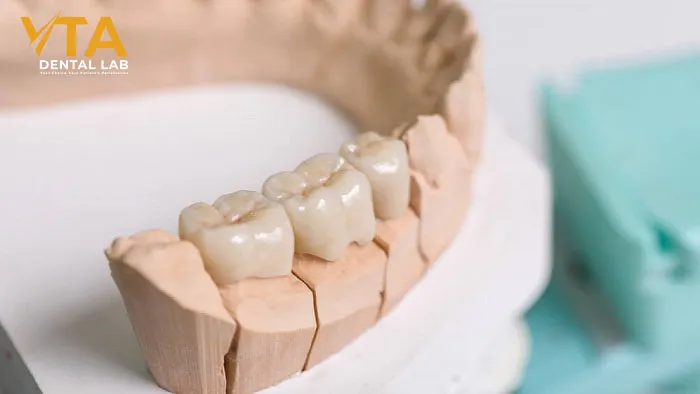
Disadvantages of a Dental Crown on a Tooth
Despite their many advantages, there are some drawbacks of a dental crown on a tooth that patients should consider. One major disadvantage is the irreversible removal of natural tooth structure during the preparation process. Additionally, some patients may experience tooth sensitivity, particularly to hot or cold temperatures, after receiving a dental crown. In some cases, the crown on a tooth may become loose or even fall off if the bonding material weakens over time. There is also a risk of chipping or cracking, especially with porcelain crowns, which may require repair or replacement.
If the dental crown is not fitted correctly, it can cause discomfort or affect the bite, leading to potential jaw issues. Finally, while a dental crown on a tooth is a long-term solution, it is not permanent and may need replacement after several years, depending on oral hygiene and daily habits.
In Conclusion
To ensure a successful restoration, it’s important to provide detailed impressions or clear digital files to the dental lab. Specify the type of crown material, color, and any special requirements. This will help the lab create a restoration that closely resembles the natural tooth in shape, size, and color.
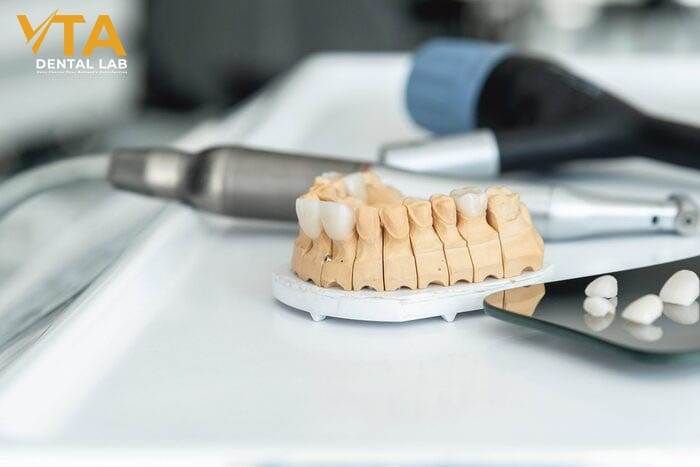
The dental lab will use either traditional hand polishing techniques or computer-aided design/computer-aided manufacturing (CAD/CAM) technology to fabricate the crown. After the crown is made, it will be sent to the dental clinic. Before final cementation or bonding, ensure that the crown on a tooth fits properly and provides a seamless aesthetic. Make any necessary adjustments before placing the final crown.
Moreover, dentists should choose a trusted dental lab partner that uses high-quality materials and skilled technicians to create accurate restorations. VTA Dental Lab manufactures crowns with precision and consistent quality, helping dentists provide exceptional service to their patients. To learn more about our services, visit the VTA Dental Lab website or send us a case to experience our expertise firsthand.